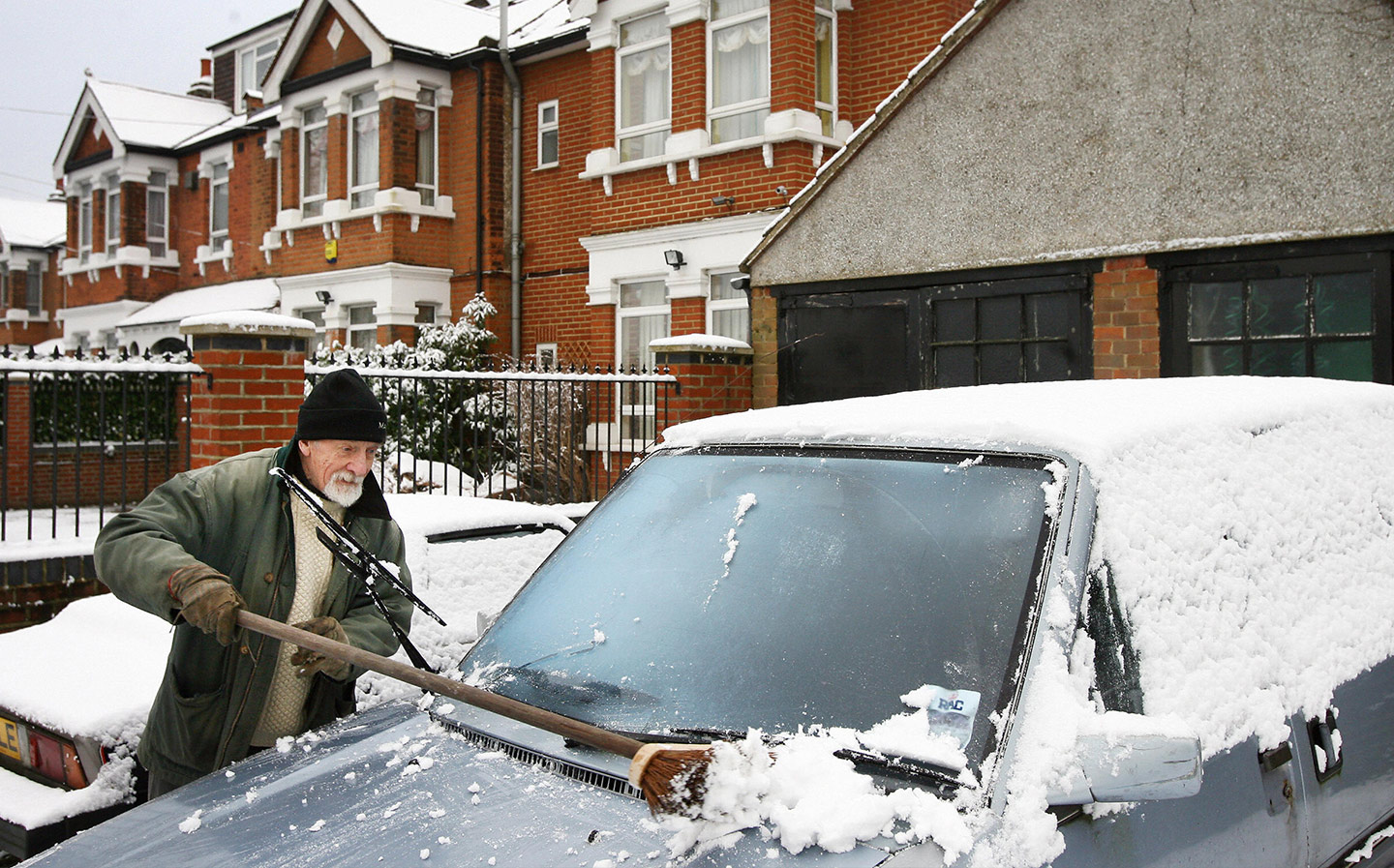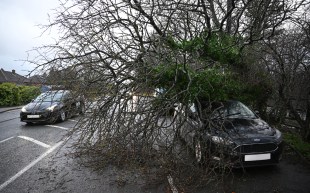How to store a classic car for winter
Caring for your beloved motor during the cold and wet months
IT’S CALLED “cuffing season”. When the temperature drops and single folk seek out a snuggle buddy to help get them through the long, dark nights. But for those of us with classic cars, it’s a time of year when we may decide its best to say au revoir to our true love, as we pack it up and keep it safe from the damp air, and the treacherously icy – or worse, salted – roads.
The spring and summer fling you shared is – for some of us, at least – now a collection of Instagram posts over which to pine, and the gritters are upon us. To make the process of conscious uncoupling with your classic easier, channel your inner Gwyneth Paltrow and follow this guide to hibernating a vintage motor.
When these lonely, frosty days and nights are behind us, your reunion will be happier for it.
Step 1: Clean your classic car thoroughly
Was it the shiny chrome and glossy paintwork that made it love at first sight? You’ll want to keep it that way, then.
“Giving your car a good wash, polish and wax will help prevent corrosion from setting in and prolong the need for more costly work like re-spraying in the future,” explains Richard Jaye, owner of Galaxy Detailing.
“Any grime left on the surface such as bird poo and dead bugs can be acidic and slowly eat away at the paint or chromework. However, it’s not just about removing muck from the areas you can see – dirt and moisture hiding in the crevices can do the most damage long-term.”
Experts like Jaye recommend a thorough check for any trapped water. Use a microfiber towel or hair dryer to rid it from places such as inside the boot, under the bonnet, inside door jams, around rubber seals, trims, and mirror surrounds. If you have a soft top, keep it up. Don’t be tempted to fold it away because this could cultivate mould.
Brake discs also need to be dry. Leaving them damp can cause the pads to stick to the disc and lock on, so take your car out for a short run after washing.
Jaye’s top tip: check for stray service station snacks because rodents with a taste for cheese & onion will move in and make a nest. The only thing you want to feed is the rubber seals – with WD-40, to help keep them pliable and prevent them from cracking – and leather with a good quality treatment.
Step 2: Help the wheels and tyres cope with the strain of going nowhere
Car wheels are designed to move, so you’ll need to give them some care and attention during this period of inactivity.
The first thing you need to do is remove and clean each wheel nut, then smear a small amount of anti-seize grease – such as copper grease – on the threads to reduce the risk of them seizing into place.
You’ve then got to decide on the best method to prevent flat-spotting, and make sure you remove any stones or debris from the tread. If you’ve got the facilities, you could jack the car up and put it on axle stands so that the wheels no longer make contact with the ground – which also takes the pressure off bearings.
Another option is to use a tough plastic “tyre trainer”, but the easiest is to pump the tyres up an extra 10psi – making sure to drop the pressures again if you intend to drive the car.
Leave your car parked with the handbrake off as this can have a tendency to seize during months of sitting idle – chocks will help prevent it from rolling away.
Step 3: Check your levels and treat the fuel
“I have seen cracked blocks and split radiators, so make sure your anti-freeze is at the right concentration and topped up,” advises Dominic Taylor-Lane, MD and founder of the Association of Heritage Engineers.
Use a premix windscreen washer fluid or buy it concentrated and mix 50/50 with distilled water. The additive will stop the water freezing and distilled water will prevent a build-up of grime in your washer bottle that you can get it you use tap water.
Modern fuels can go off, and in the past you would have had to drain the fuel and replace it with paraffin to prevent rust in the tank.
“Ethanol in petrol is an issue for stored cars as it attracts water, and the fuel can separate if left. Before you put it away, add a stabilising product to the tank, which helps prevent fuel fractions separating,” says Taylor-Lane. “Make sure it flushes through the whole system by running the engine.”
Taylor-Lane’s top tip: If you are doing anything that might compromise the safety of the car, leave yourself a reminder of what you have done for the spring reveal.
Step 4: Look after the battery – and wipers
“If a battery is not disconnected there is a possible risk that it could be discharged in a short amount of time, which means destruction of the battery and the need for a new one,” says Laura Kukuk, an automotive engineer and classic car specialist.
“Particularly with classic cars, small amounts of electricity are often running through the system or even worse, an electrical part is continuing to suck up energy. As the engine is not running, the battery isn’t charging, it will run low. To avoid this, take remedial action and use an electronic battery charger.”
Kukuk’s top tip: If windscreen wipers aren’t lifted off the glass or newspaper put underneath there is a risk that the rubber can build up a connection with the glass. Once the wipers are needed to be used again the surface of the rubber will be destroyed, rendering them unusable.
Step 5: Kill your biggest rival – moisture
“High quantities of humidity in the air can lead to corrosion in the engine as it is blank metal – there’s no paint or other sorts of surface protection to protect it,” explains Kukuk.
Condensation can form on the cylinders and surfaces, similar to a cold bottle of water in the fridge, and the fact that one of the valves will likely be open means moisture can creep in and cause problems.
In order to prevent these risks, climate control is necessary. “An ideal humidity is around 45%,” says Kukuk, “which could be achieved with a dehumidifier, but storing your car in a garage with air flow also helps.”
If you choose to use a dehumidifier, be careful how high you set it. If it’s too high it will draw the moisture out of everything around it, including veneer dashboards and anything made of vinyl or soft plastic.
An air circulation tent, such as a Carcoon, is also an option, if you’ve got space for it. Built-in fans constantly circulate the air and prevent dust settling on the vehicle. They can also be cheaper to run than de-humidifiers.
Step 6: Protect those curves with a quality car cover
Whatever you do, make sure the car is clean before you put a cover over it, and never use a material that is 100% waterproof (put that plastic tarpaulin down!) as it’ll make your car “sweat”. And as we know by now, moisture is bad. A bad cover could even cause micro blistering in the paintwork.
Indoors A semi-tailored breathable cover is best if you are storing your car in an unheated garage. If it’s heated, you could opt for a fully- tailored cover.
Outdoors Don’t use a one size fits all cover. It will flap about in the wind and could damage the car beneath. It might be cheaper, but you’ll pay for it later. A fully tailored cover will sit too close to the body, and trap moisture underneath it. What you want is a good-fitting semi-tailored car cover with a soft inner lining that won’t mark the car if it does move about a bit in the wind. If its snows, brush it off as soon as possible to prevent the build-up of moisture.
Step 7: Protect against unwanted attention
If your garage has windows, cover them, advises Paul Hutley, owner of Auto Vault, a classic car storage facility. “We use CCTV to ensure that there is video proof of any movement and the premises are alarmed. We also advise to never leave your garage door remote in the car as that makes a very easy exit for any burglar.”
It’s also important to make sure your car insurance is valid, even if you’re not using the car, as thieves operate all year.
Immobilise it, too. Simple methods can include switching off the fuel pump or removing the rotor arm, but you can get high-tech systems. And consider fitting a tracker.
What to do when you get that itch…
It’s a clear, crisp, morning and you just can’t help yourself – you have to go for a winter drive in your classic car. That’s fine, of course, and running the car periodically can help look after it. But what needs to be done during and after?
Your biggest problem is likely to be salt on the road, which causes corrosion. Hopefully you’ve used a good wax on the paintwork which will help prevent damage, but it’s the undercarriage that’s most at risk.
Treating the underside professionally with a powder coating or quality waxoil will help protect the metal, but as soon as you get home wash underneath thoroughly with a hose. And when you’re out, avoid puddles as they can hold larger amounts of salt.
Classic car winter maintenance checklist
- Keep an eye oil for leaks, such as coolant or oil, and see to them in time.
- If you’re using a dehumidifier, remember to empty any tanks from time to time.
- Find out if water or fuel is leaking into your engine oil. The easiest way is to fill up the oil to the maximum level and check it every few weeks, if it seems to be increasing, it is because fuel or water are adding to the engine oil.
- Get in your car every week or so and pump the brakes.
- Never start your engine and leave it running at intervals during storage as this creates moisture in the engine and exhaust. If you want to run it, take it out for at least a ten mile drive to make sure everything warms up and the moisture is cleared… but make sure your MOT and insurance are still valid, and you haven’t disconnected anything that would make it unroadworthy.





